Indigo Dye Experiments
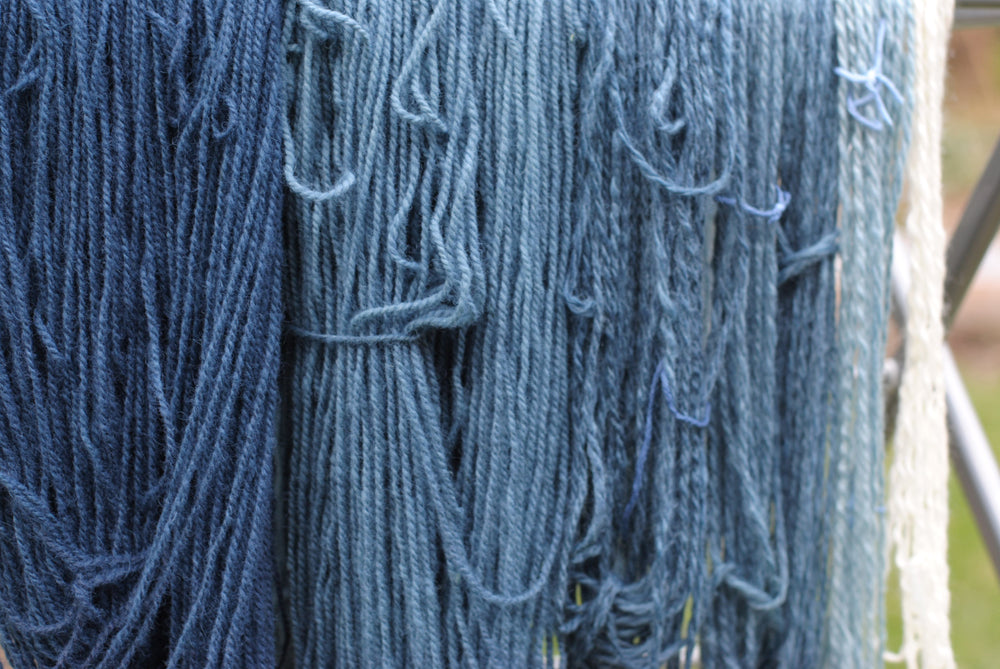
It's been over two months now since we had to temporarily shut down the dye studio to wait out COVID-19. We've been able to have limited access to the studio again for the past few weeks, and I'm happy to be back! But last month when I still didn't have access I was itching to play with colour again, and realized that in amongst all the yarn and other products that I'd hauled home back in March, I had some indigo dye kits. I didn't have any of my other dyeing equipment with me, but indigo doesn't require heat or mordanting to set, so it was the perfect solution for me to scratch that dyeing itch!
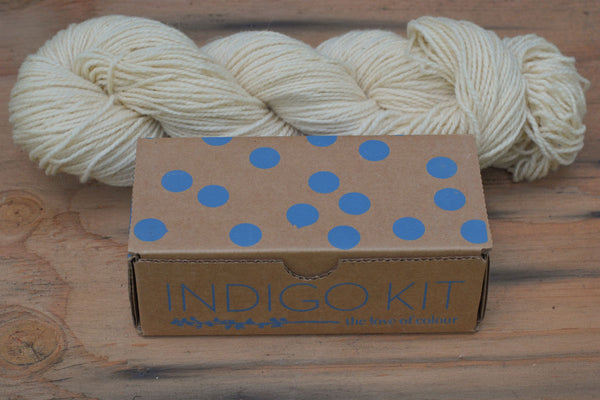
The kits that we stock are from The Love of Colour, and include pretty much everything you need to get started with your first indigo vat, as well as comprehensive instructions. I do recommend reading the directions thoroughly before starting, to make sure you have all the equipment you need and the time to see the project through. I did my dyeing over three days: on day one I mixed my dye vat (it's better to let it rest overnight before using it), on day two I dipped my fabric and wool, and on day three I rinsed everything (after letting it completely oxidize).
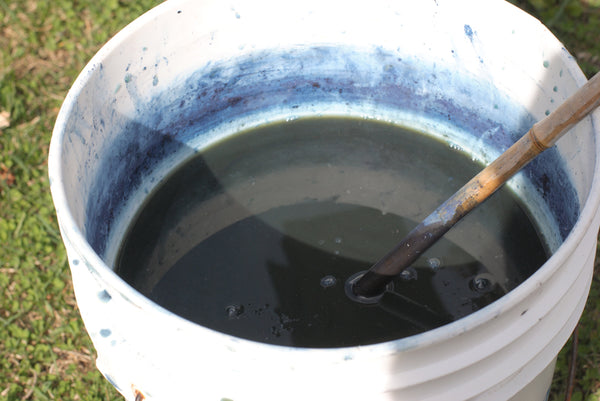
I mixed my vat in a large bucket, and did my dyeing out in the backyard. It's can be a messy process, so I definitely recommend doing it outdoors if you have the option! Indigo dyeing is pretty magical, because the dye vat is actually a greenish colour, and the dye turns blue once you remove your fibre from the dye bath and it oxidizes.
I'm not at all an expert in the technical aspects of indigo dyeing, so rather than try to explain that here I'm just going to share some of my little experiments and results. If you would like to learn more about indigo, please check out the kit details or these FAQ from The Love of Colour.
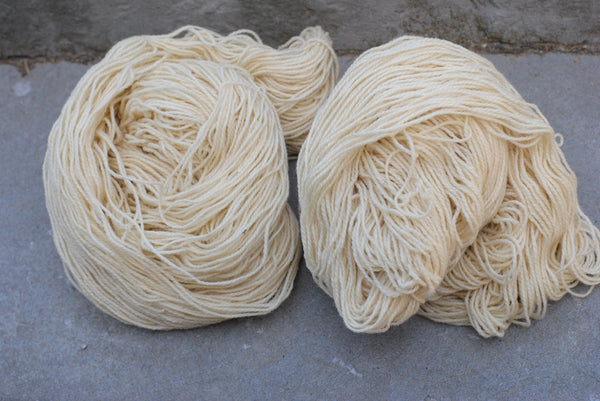
I started by gathering whatever yarn and fabric I had around the house that I thought might work in the vat. Basically I was looking for natural fibres, in light enough colours that they could be overdyed. I found a couple of undyed skeins of commercially-spun wool.
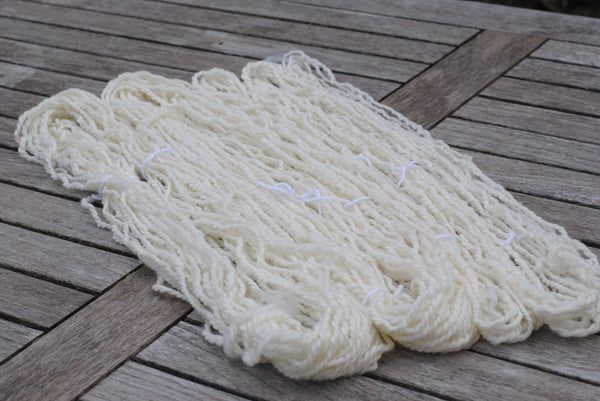
I also had some natural handspun wool from a spinning workshop I took several years ago. I divided it into several small skeins so that I could play with creating a gradient by building up the colour over multiple dips.
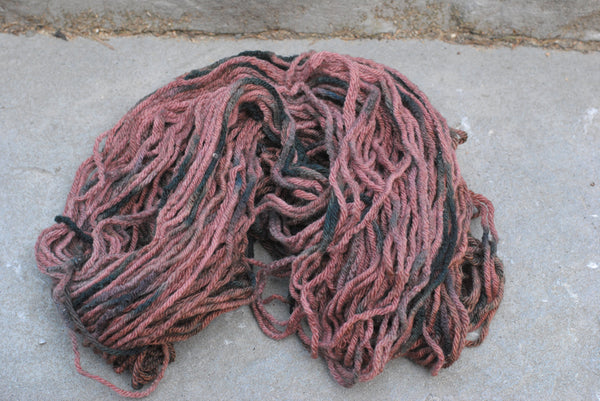
This skein of merino wool was a failed experiment using acid dyes. I was trying a new process a few years ago and it resulted in a weird splotchy colour and felted areas - not the effect I was going for! I thought it might be fun to throw it in the vat and see what happened - it couldn't really get any worse...

I went through my fabric stash as well, and surprisingly didn't have much that was suitable, but I found a few scraps of this red wool that I though might be fun to overdye, and some pale blue and cream cotton blends. I wasn't sure how well the blends would work, but I wanted to try some shibori-inspired resist techniques, so decided to try them anyway.
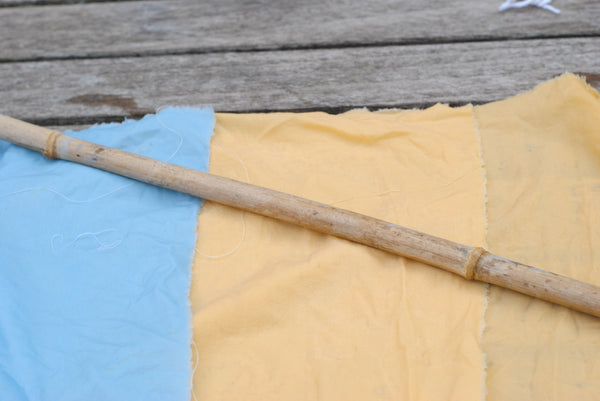
I had a few larger pieces that I tried tying around a bamboo stick (leftover from last year's garden stakes).
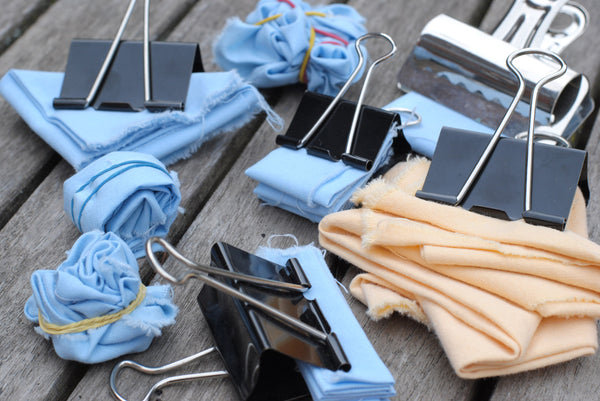
And a bunch of smaller pieces that I folded and used elastics or binder clips to hold the bundles together.

Once I had my vat and all my materials ready I started dipping! Since this was just for fun, I didn't really keep track of how many dips I was doing or for exactly how long. I learned a lot though, and have a few ideas of what I would do differently next time around.
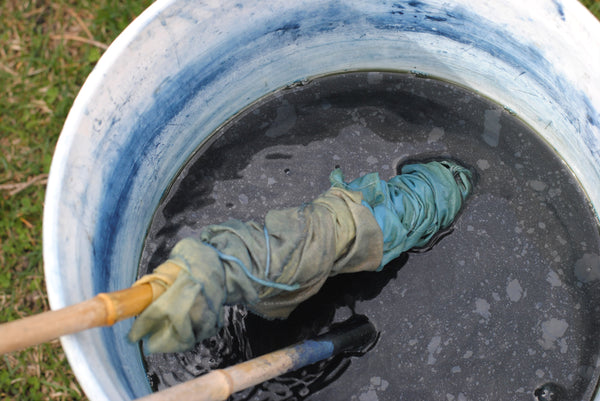
The fabric that I tied around the stick ended up being too bulky, so the dye didn't penetrate very well into the layers. I really like the effect on the areas of fabric where it did work out though, so I would definitely try it again.

The small folded pieces of the pale blue fabric had some fun patterns too, but again I think I folded them a bit too tightly, so the dyed areas are smaller than I would have liked.

The cream on the other hand didn't take up the dye well at all. I was hoping the base colour under the indigo might give a greenish colour to the final fabric, but honestly it mostly just ended up looking greyish and dirty.

The wools that I dyed came out pretty much the way I wanted them to though! The bright red fabric was toned down to a rich maroon, and the problem skein of splotchy merino yarn turned out pretty nicely too.


For my two undyed skeins I wanted to do one paler and one darker, thinking I would use them together in a colourwork project. I think I should have done one less dip on the lighter one, since after rinsing and drying there's a bit less contrast than I'd hoped for between them, but overall I'm happy with the colour.
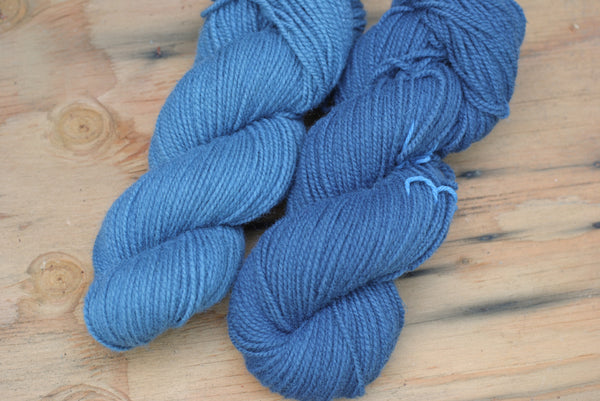
I was also please with how the gradient turned out, although it didn't get as dark as I'd hoped because it was one of the last things I worked on. By the time I got to it the vat wasn't quite as strong and I wasn't quite as patient, so it didn't get as intense of a colour as some of the other fibres.
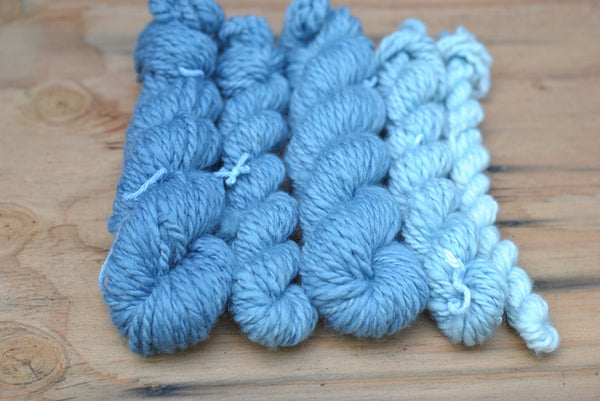
I'm not totally sure what I'll do with these yet, since there's not really that much yardage, but I'm imagining maybe a cowl or hat for next winter. It could be nice to have a wearable reminder of spending this time outside dyeing on a beautiful spring day!
If you'd like to try out some backyard indigo dyeing for yourself, we just received a new shipment of kits so there are plenty in stock. We're also now offering these kits paired with one or two skeins of undyed 100% Canadian wool yarn for you to use in your own dye experiments. You can order below or get more details here.
I'd also love to hear from you if you've ever done any indigo dyeing. Do you have ideas of fun techniques or problems to watch out for? Please feel free to leave a comment below with your own tips and tricks!
Laisser un commentaire
Voir l'article entier
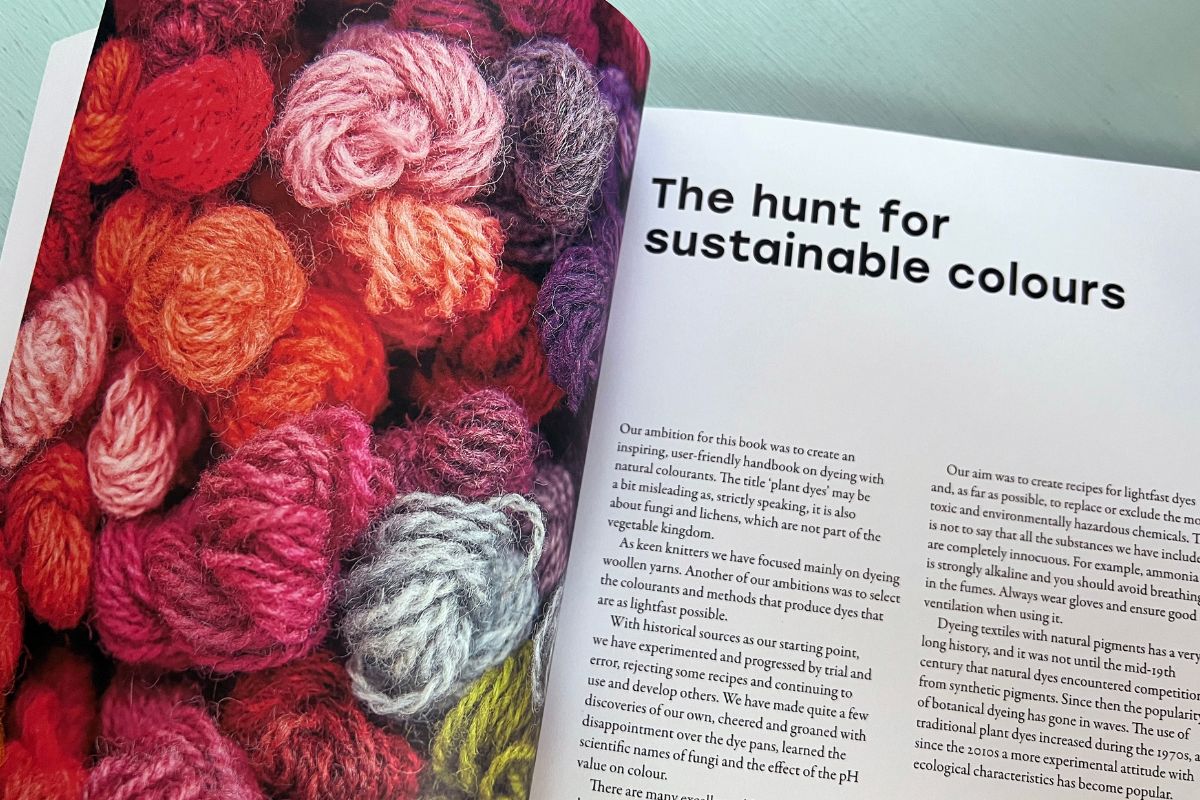
Choosing a Natural Dye Book
Have you ever tried dyeing your own yarn using natural colorants? Are you now looking for more inspiration? Or maybe you’ve always been curious, and are wondering where to begin. Below, we’ve introduced four books that could be exactly what you’re looking for!
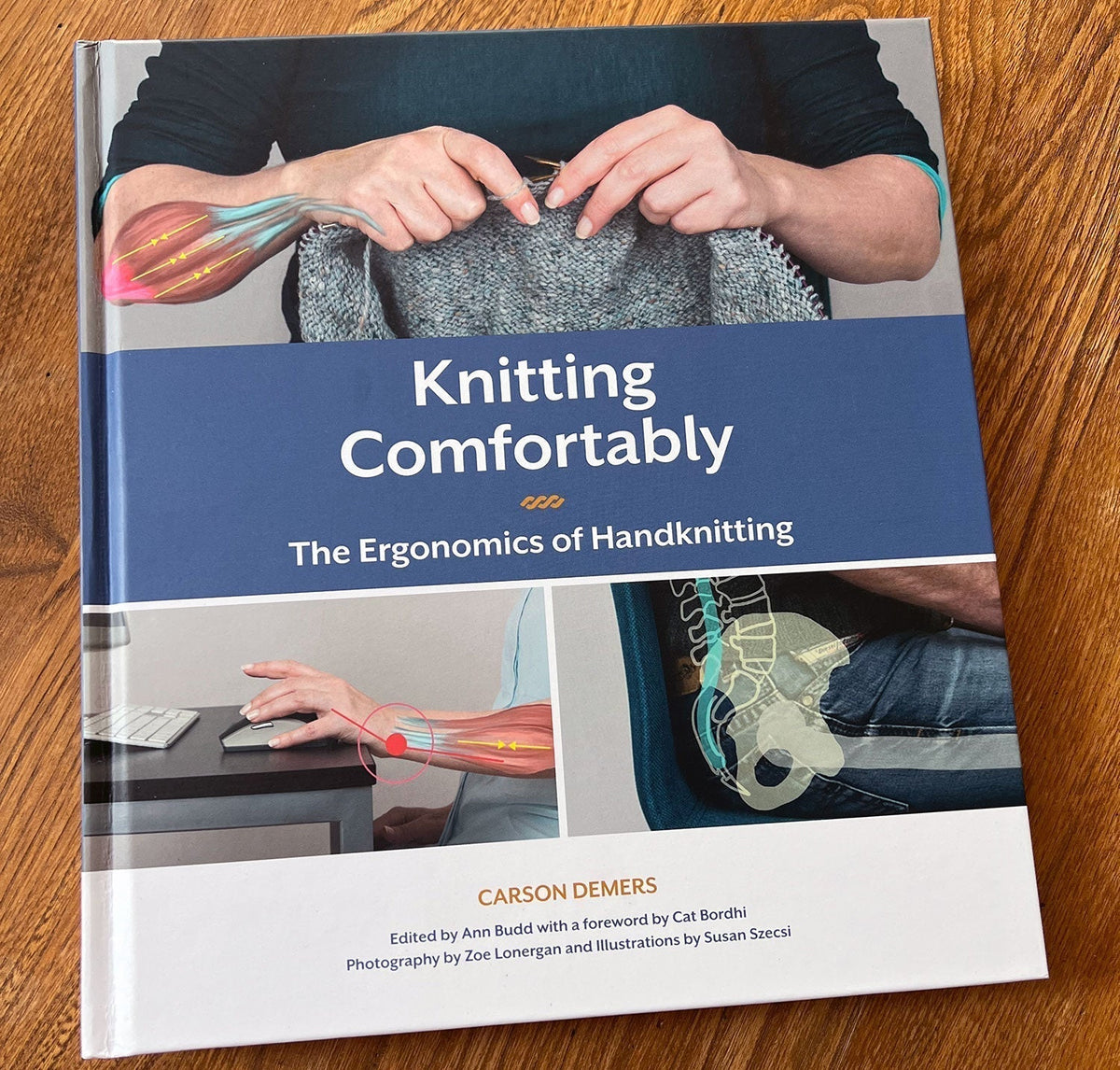
Knitting Comfortably: The Ergonomics of Handknitting
One month ago, I found myself in the emergency room with unbearable back pain. I later learned it was caused by a herniated disc and osteoarthritis (OA) that had taken over my entire lower back. Would I ever be able to dye yarn again, let alone... knit...?



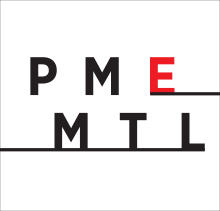
Debbie Sullivan
Auteur